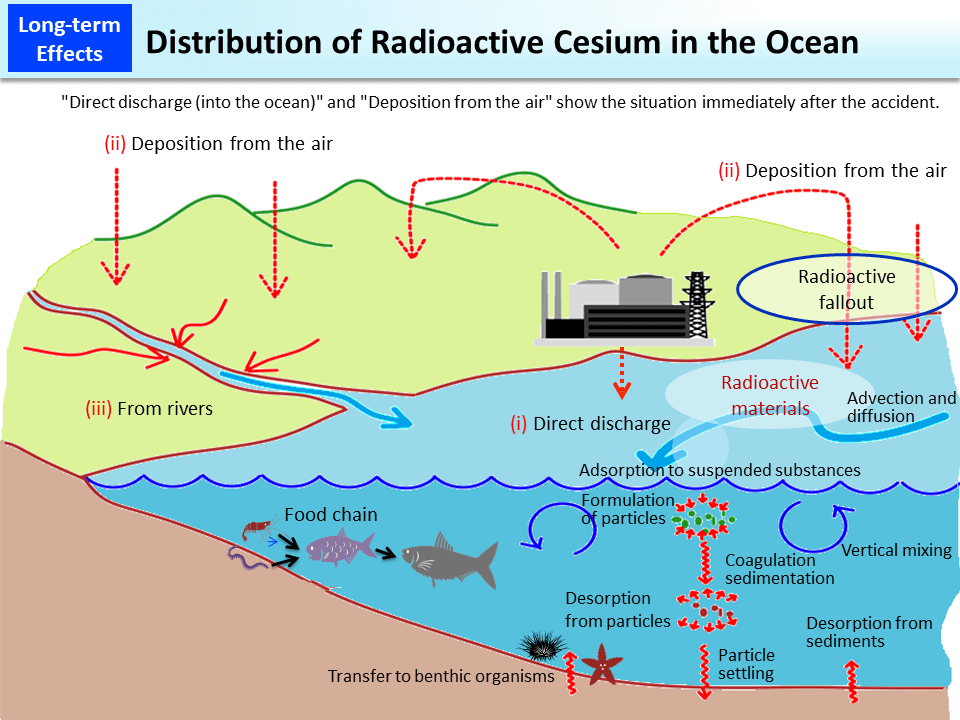Distribution of Radioactive Cesium in the Ocean
Distribution in the ocean of radioactive materials released due to the accident at Tokyo Electric Power Company (TEPCO)'s Fukushima Daiichi NPS has changed significantly over time. There are three routes through which radioactive materials are transported to the ocean: (i) direct discharge of radioactive materials into the ocean from the NPS; (ii) fall onto the ocean of radioactive materials transported with wind; and (iii) transportation into the ocean of fallen radioactive materials via rivers or groundwater. However, in the case of cesium, which is strongly adsorbed in soil, it is hardly possible to imagine that it transfers together with groundwater and reaches the ocean.
Radioactive Cs concentrations in seawater increased significantly immediately after the accident but declined in one or two months as cesium was transported or diffused with the ocean current. Radioactive Cs concentrations in marine organisms, which have much to do with radioactive Cs concentrations in seawater, also declined in tandem with the decline in radioactive Cs concentrations in seawater. Additionally, transfer of radioactive cesium, part of which was deposited on the sea bottom, to bottom fish was a worry, but the survey results show declines in radioactive Cs concentrations in flatfish, Pacific cod, and other bottom fish including those caught off Fukushima Prefecture. It has been made clear that radioactive cesium has rarely transferred from sea-bottom soil to marine organisms (Source: "Report on Inspection of Radioactive Materials in Fishery Products" (2015), Fisheries Agency).
(Related to p.78 of Vol. 2, "Trends of Radioactive Cesium Concentrations by Fish Species (2/2)")
- Included in this reference material on March 31, 2013
- Updated on March 31, 2017

